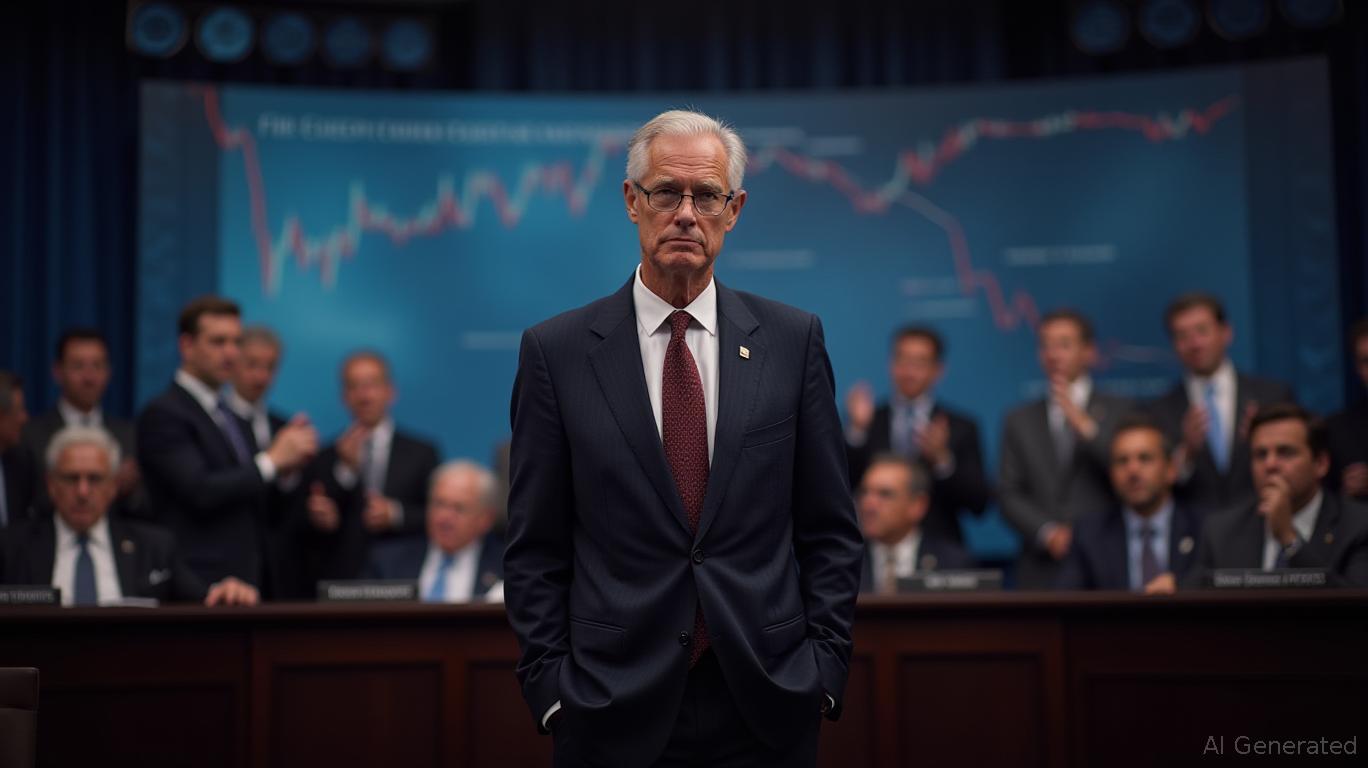Fed's Gradual Rate Reduction Triggers Discussion as Political Tensions Rise and Inflation Outlook Remains Unclear
- Federal Reserve cuts rates by 0.25% amid slowing labor market and weaker growth, signaling potential 2025-2026 easing. - All FOMC members except Stephen Miran supported the cut; market expects more aggressive reductions than Fed's projections. - Inflation remains at 2.9% due to tariffs and tight labor market, with Powell warning of risks from economic deterioration. - Trump criticizes Fed's pace, while Powell reaffirms independence amid political pressures and global trade uncertainties. - Deloitte warns
On Wednesday, the Federal Reserve made its first interest rate reduction in almost twelve months, lowering the benchmark federal funds rate by 0.25 percentage points to a new range of 4% to 4.25%. This action comes amid signs of a slowing job market and weaker economic output, with the Fed expressing increasing unease about employment growth and wage trends. This adjustment signals a potential shift towards a more supportive monetary policy for the rest of the year.
The decision received backing from all but one member of the Federal Open Market Committee (FOMC)—Stephen Miran, recently appointed, who pushed for a more substantial 0.5 percentage point cut. According to the Summary of Economic Projections, the central bank now expects to implement two additional rate reductions in 2025 and another in 2026. This projection is more conservative than the market’s, which has forecasted five cuts this year, highlighting the Fed’s cautious approach to policy changes.
Inflation is still running high, with core personal consumption expenditure (PCE) inflation reaching 2.9% in July. The Federal Reserve attributes the latest inflation rise to tariffs causing higher prices, especially within services, and a labor market that, though less heated, remains tight. Unemployment is at a historically low 4.2%, but job gains have slowed, averaging just 35,000 new positions per month over the last quarter—significantly less than the 168,000 monthly average seen in 2024. Powell pointed out that the labor market is in a fragile state, with potential for significant job losses and higher unemployment if economic conditions worsen.
President Donald Trump has openly criticized the Fed’s approach to lowering rates, arguing that its actions have been too gradual to effectively boost the economy. His administration has also tried to exert more influence over the Fed, appointing Stephen Miran to the FOMC and making efforts to remove Governor Lisa Cook, who has resisted the administration’s attempts. Despite these external pressures, Fed Chair Jerome Powell reaffirmed the commitment to relying on economic data and upholding the central bank’s independence.
Going forward, the Fed must strike a careful balance. The labor market remains a major focus, but inflation threats persist, especially if changes in trade policies continue to drive up import prices. Analysis from Deloitte indicates that inflation may stay above the Fed’s 2% target for several years, with tariffs and global trade policy developments playing important roles. The Fed will also need to keep an eye on wage increases, particularly in the service sector, which is labor-heavy and has been a key driver of ongoing inflation.
Following the rate cut announcement, yields on U.S. Treasury securities have climbed, reflecting investor uncertainty about the Federal Reserve’s future policy moves. Market participants continue to debate the likelihood of more significant rate reductions in the near term, but Powell has stressed the importance of a cautious, data-driven approach.
As the next Fed meeting approaches in October, officials will be closely tracking economic statistics, including job numbers, inflation rates, and international trade trends. The central bank’s ability to manage these complex issues will be pivotal for the health of the U.S. economy and the achievement of its dual goals: full employment and stable prices.

Disclaimer: The content of this article solely reflects the author's opinion and does not represent the platform in any capacity. This article is not intended to serve as a reference for making investment decisions.
You may also like
Bitget Spot Margin Announcement on Suspension of MAVIA/USDT, BADGER/USDT, BAN/USDT, PONKE/USDT, FLOCK/USDT Margin Trading Services
Bitget adjusts the maximum leverage for spot cross margin trading to 5x
Bitget adjusts the maximum leverage for spot cross margin trading to 5x
Bitget adjusts the collateral ratios for cross spot margin trading pairs